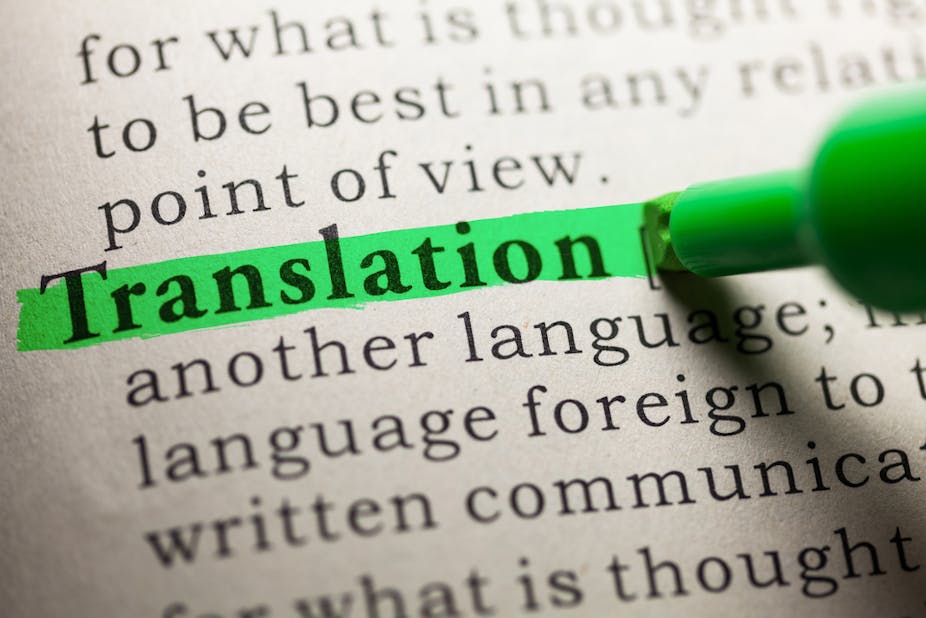South African universities are modelled on their British and European counterparts. That manifests in everything from their degree structures to their graduation garb – and their language of instruction, English.
But something remarkable is happening at South Africa’s universities. Students, staff and a few administrators are working hard to open new spaces – African spaces – within higher education. They are trying to decolonise the system. How can other academic and student change-agents mirror their efforts? And what role can language play in carving out truly African spaces?
The second question arose in part because of my own experience. I had an important set of notes translated, at great expense, into isiXhosa for my students. It is one of three regional languages in the Western Cape province, where I teach.
But the isiXhosa students refused to use these notes and said they preferred to study in English. With a colleague, Ken Barris, I undertook research into the reasons behind this refusal and its implications. We presented our findings at the 2015 conference of the African Language Association of Southern Africa.
Our findings suggest that there is little value in translating academic texts into “high” or “deep” versions of African languages. Most students read and speak their mother tongues in a far more colloquial fashion. This doesn’t imply that we should turn our backs on multilingualism. It just requires a different approach.
Concept development
We found that students consider it a good thing that English is the language of teaching and learning. After all, it is used globally and locally in business and industry. Internationalisation is on the rise in higher education, which means that an average classroom houses a diversity of home languages and cultures. English tends to be a common language even in these situations.
But there are pitfalls. Teaching in English implies English cultural conditioning and communication strategies. Adopting a monolingual approach and a hegemonic language may unconsciously ignore or be unaware of other cultures in a multilingual, multicultural classroom.
Knowledge and learning considerations are most crucial in this instance. Unless students can access a concept’s meaning, their understanding is compromised. The best way to understand a concept is in one’s mother tongue. The question, as our research shows, is which version of a mother tongue best aids understanding.
In 2002 South Africa’s Department of Higher Education and Training created a language policy and related framework that encouraged the development of multilingualism at universities. Some institutions responded by creating multilingual glossaries of difficult terms and translating core notes into African languages.
‘Deep isiXhosa’ vs the vernacular
The qualitative research project involved 49 first-year isiXhosa students in Information Literacy classes from 2013 to 2015. The students engaged in free-writing about their rejection of the translated notes. This was followed by a questionnaire and focus group discussions.
The majority of students said they could not read or even understand the notes because they were in “deep isiXhosa”.
One commented that it was the equivalent of being asked to read and study in Old English. This “deep isiXhosa”, the student explained, is spoken only in the Eastern Cape province and rural areas, and particularly by older people.
Urban isiXhosa speaking youth use the language very differently. They communicate in a vernacular that may also involve some code-switching – using two languages in the same conversational interaction.
Research has shown that code-switching is common in South African schools, where lessons are taught in English but teachers switch to the mother tongue when explaining a particularly difficult concept. Teachers say this is an academic exercise: they want to help children grasp difficult content and concepts better and understand that mother-tongue explanation is a good way to do this.
The code-switching language used in schools is not deep isiXhosa, but everyday spoken isiXhosa; the vernacular. If teachers are using the vernacular to explain difficult concepts, shouldn’t translations also be in the vernacular? A number of academics support this notion of translation into a communicative, or vernacular, register.
Simple is best
Our experience and research suggests it is a waste of money to make unreadable and unusable translations that students will simply reject. The students said they would be prepared to use the notes if they were colloquial translations.
Instead of imposing translations on students, why not allow student input into the process by recognising students’ own understanding of language as a learning asset? Why not allow students to create an African space in the classroom by using understandable colloquial translations that allow them to actually grasp the academic concepts they’ll need to excel?

